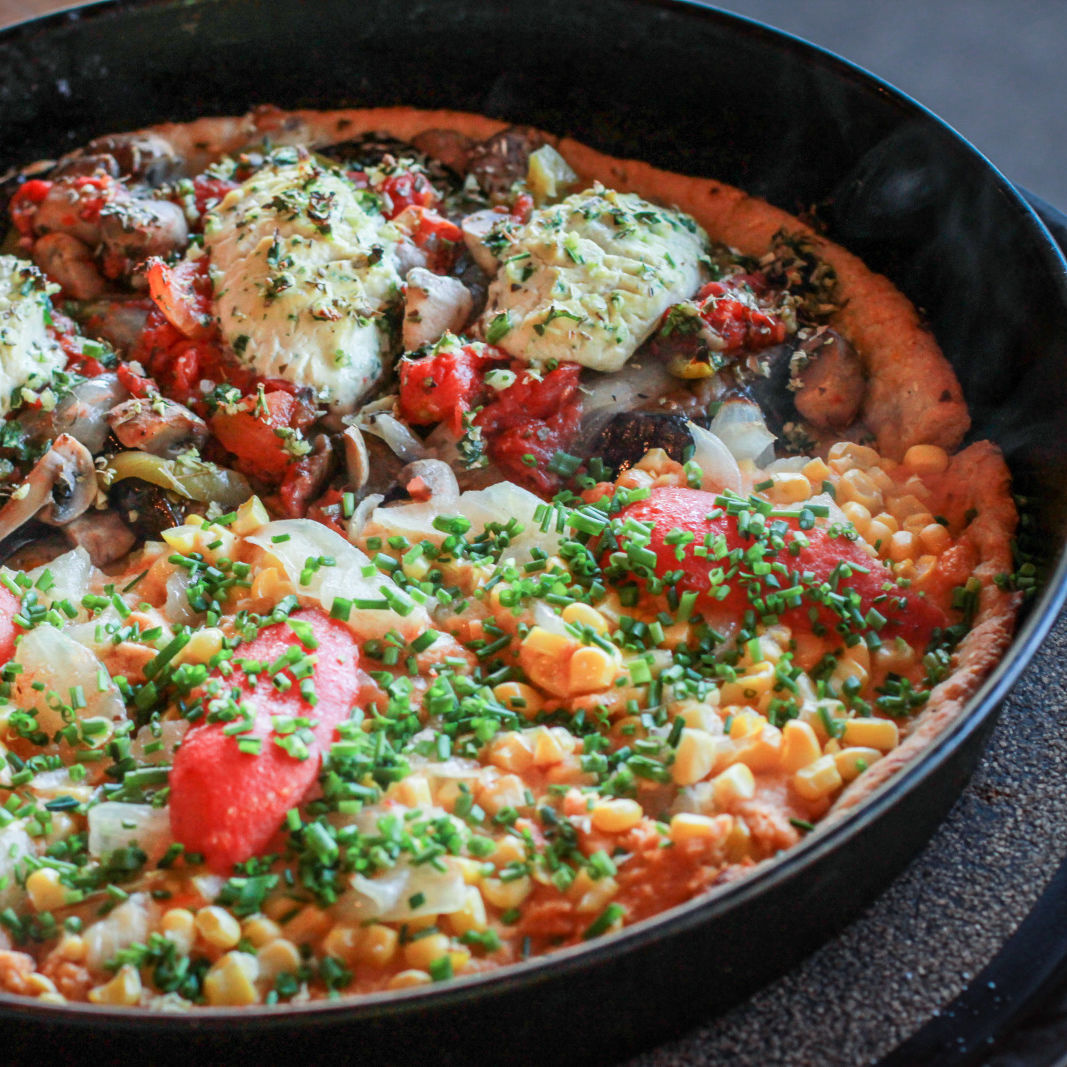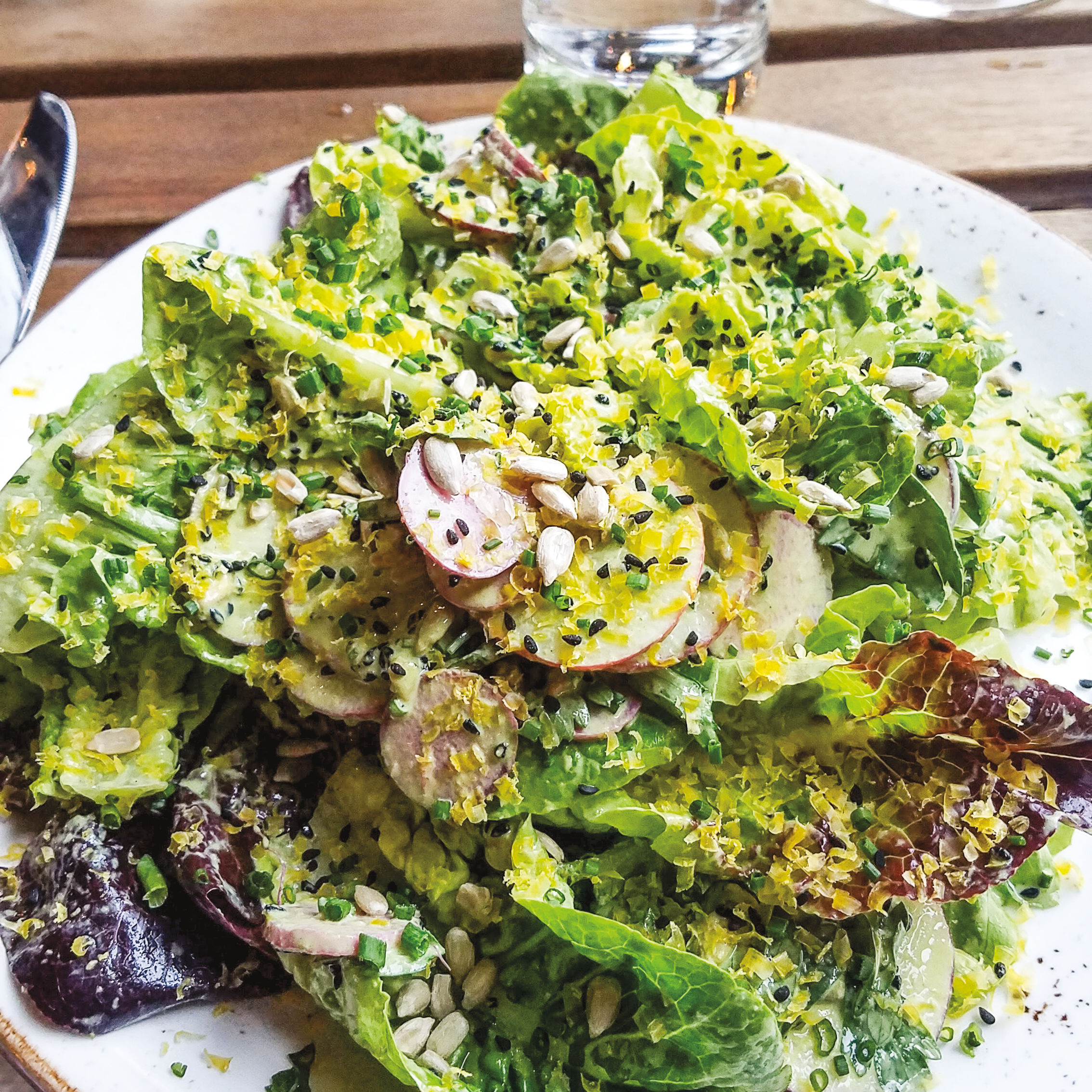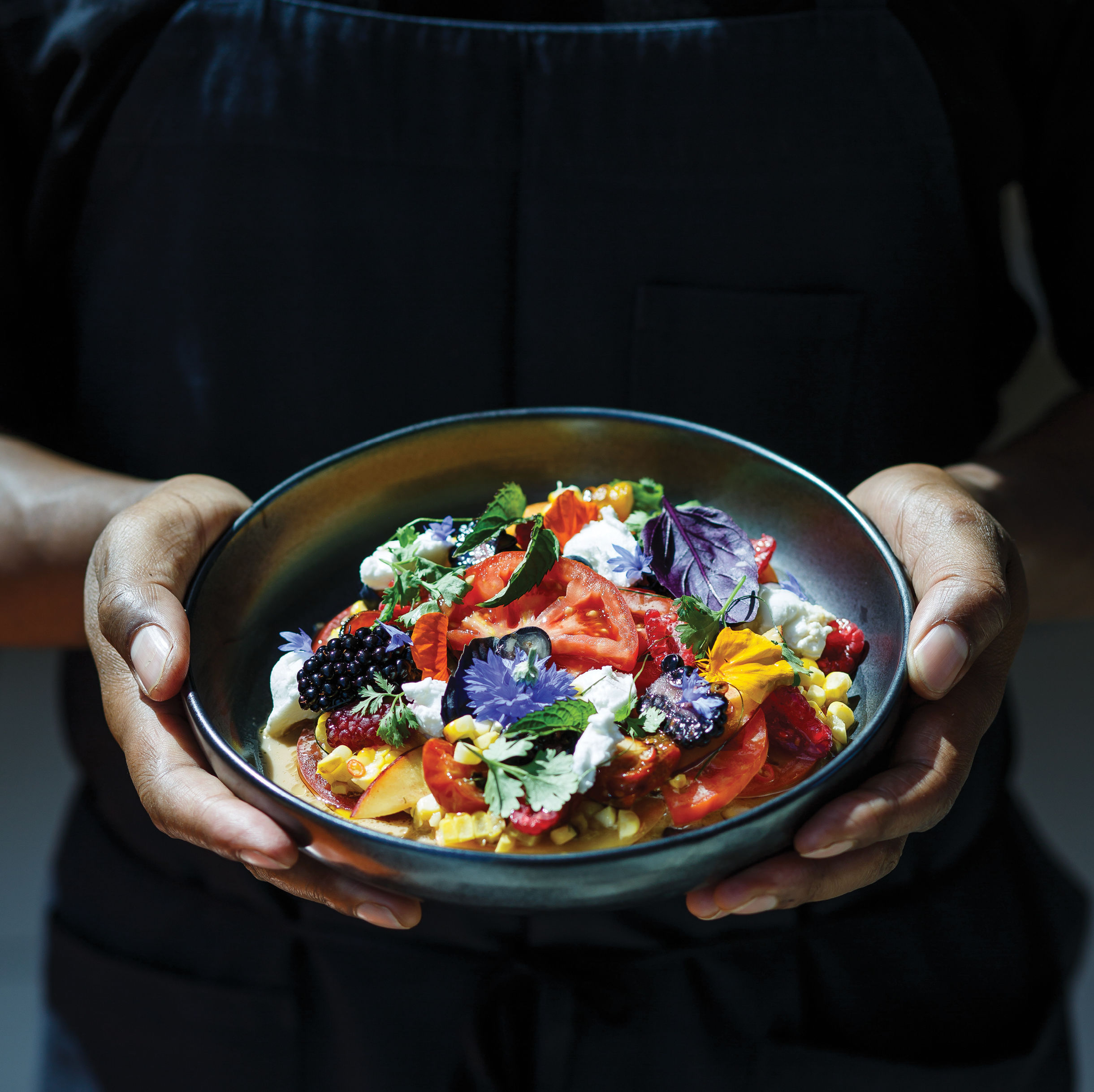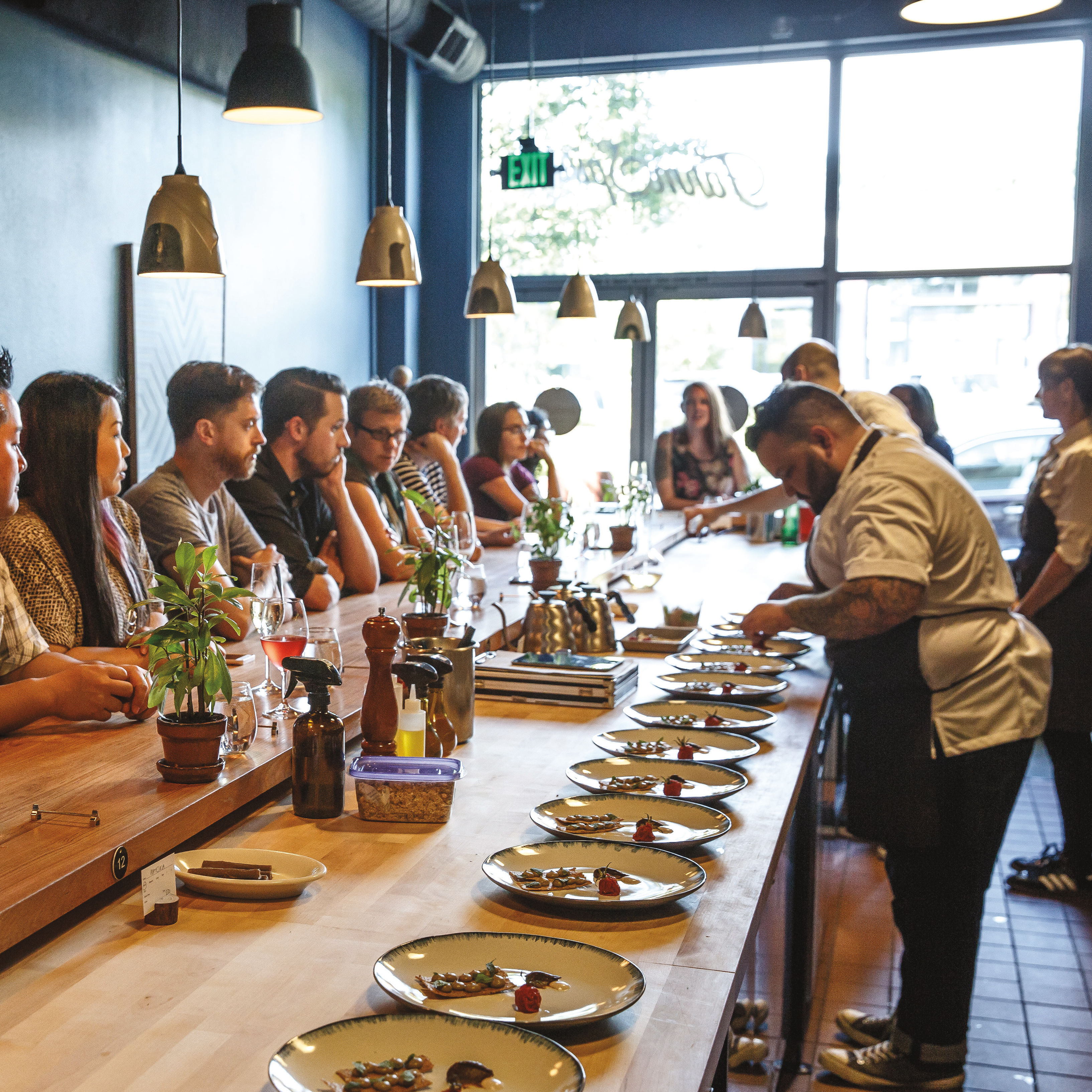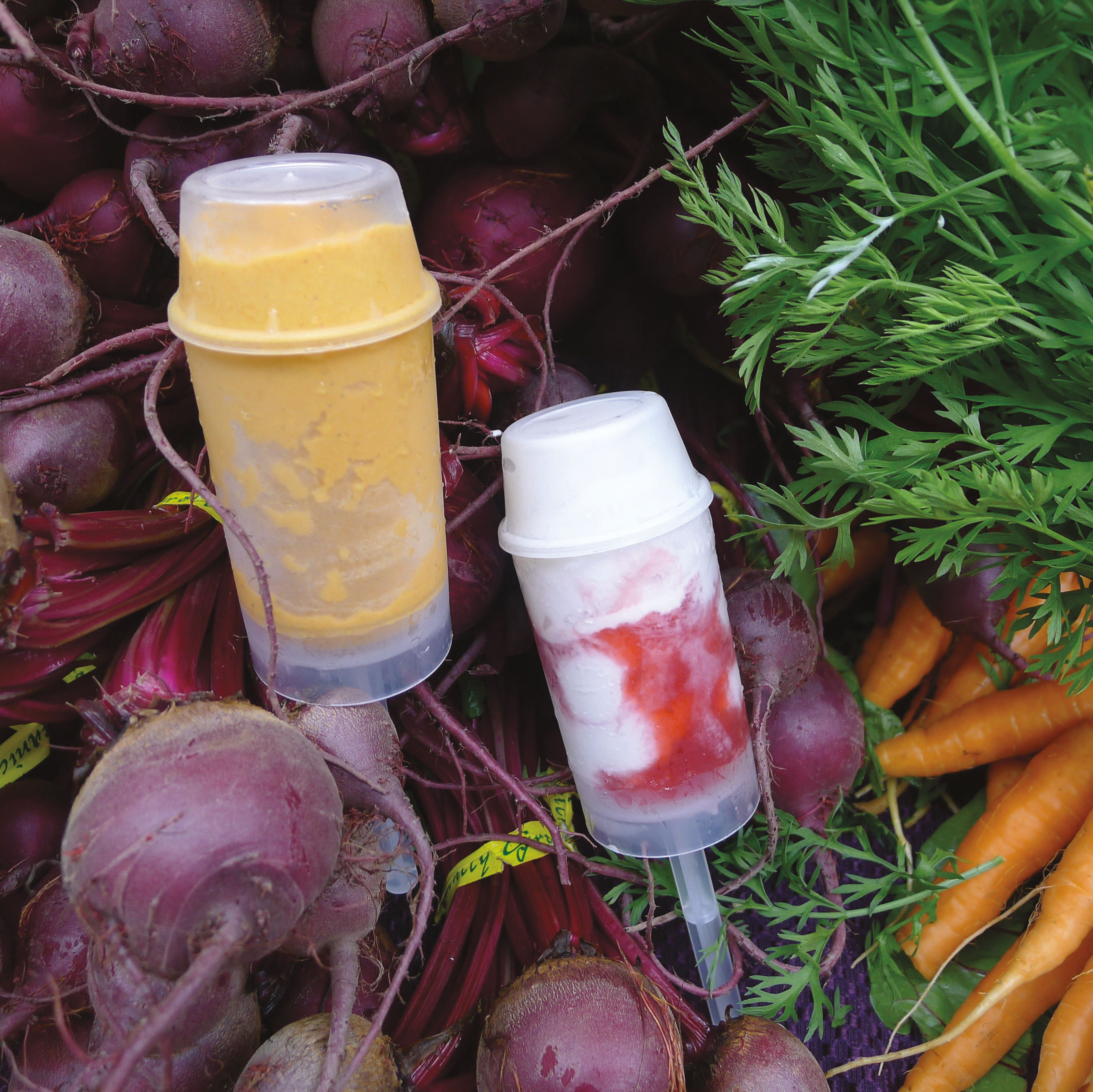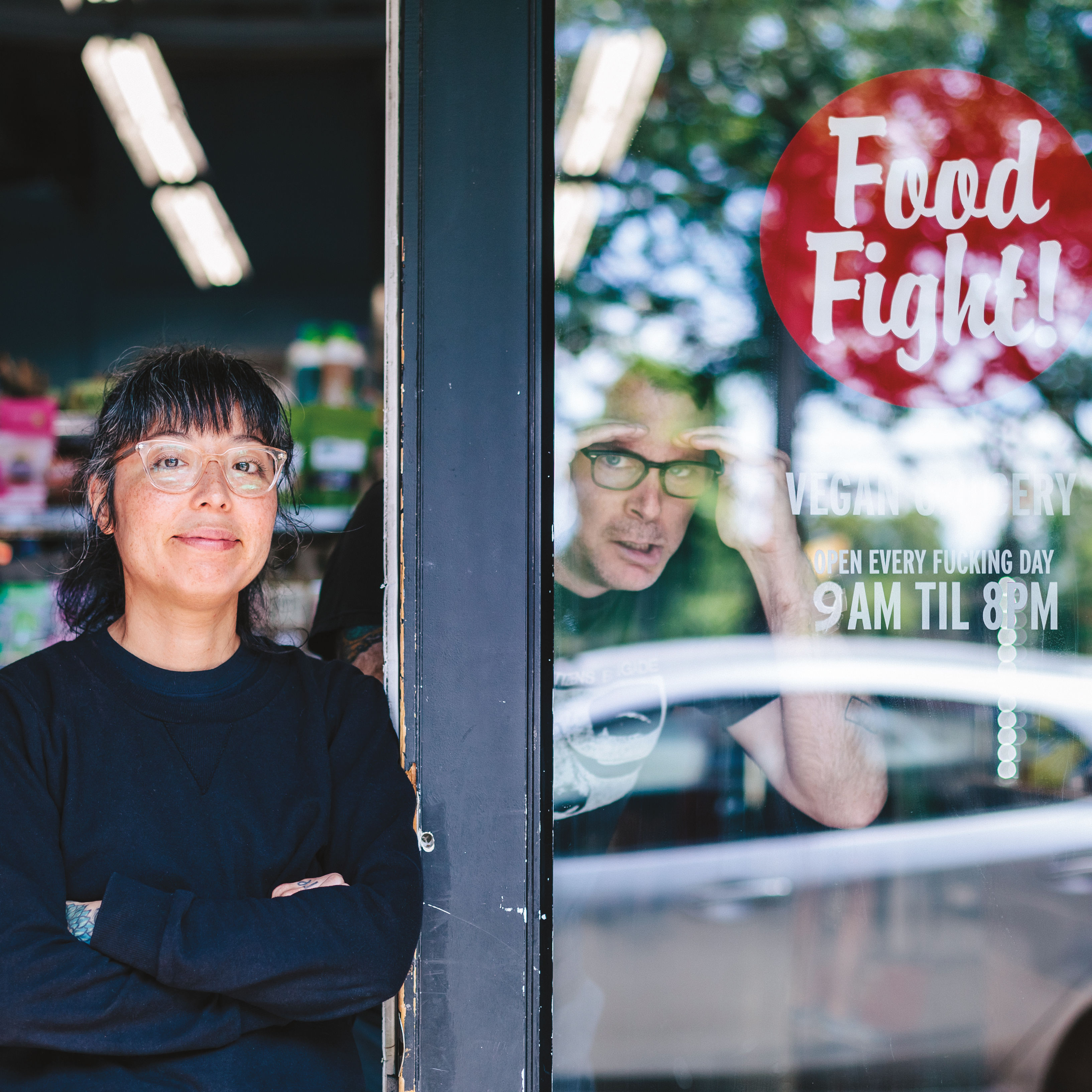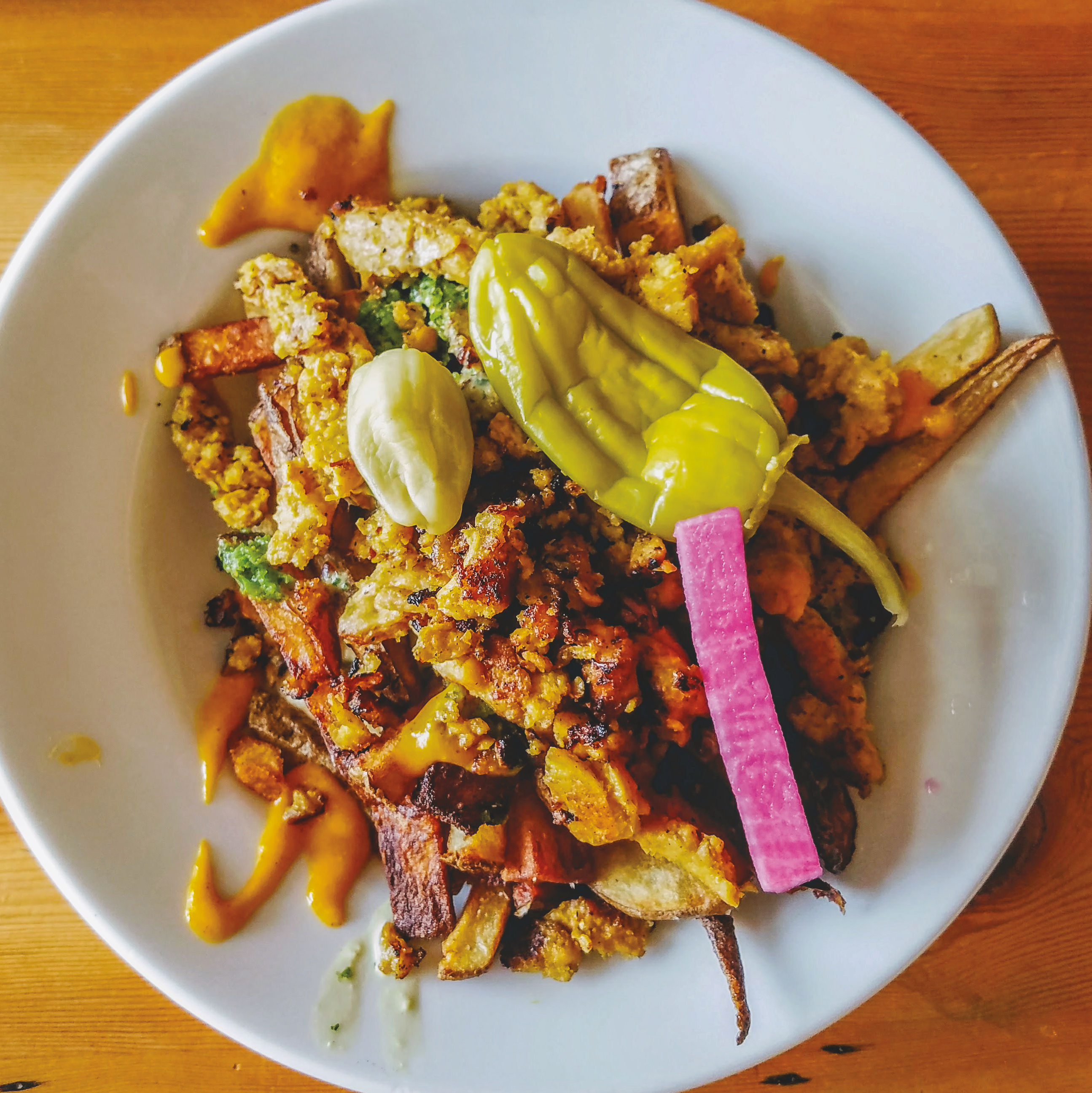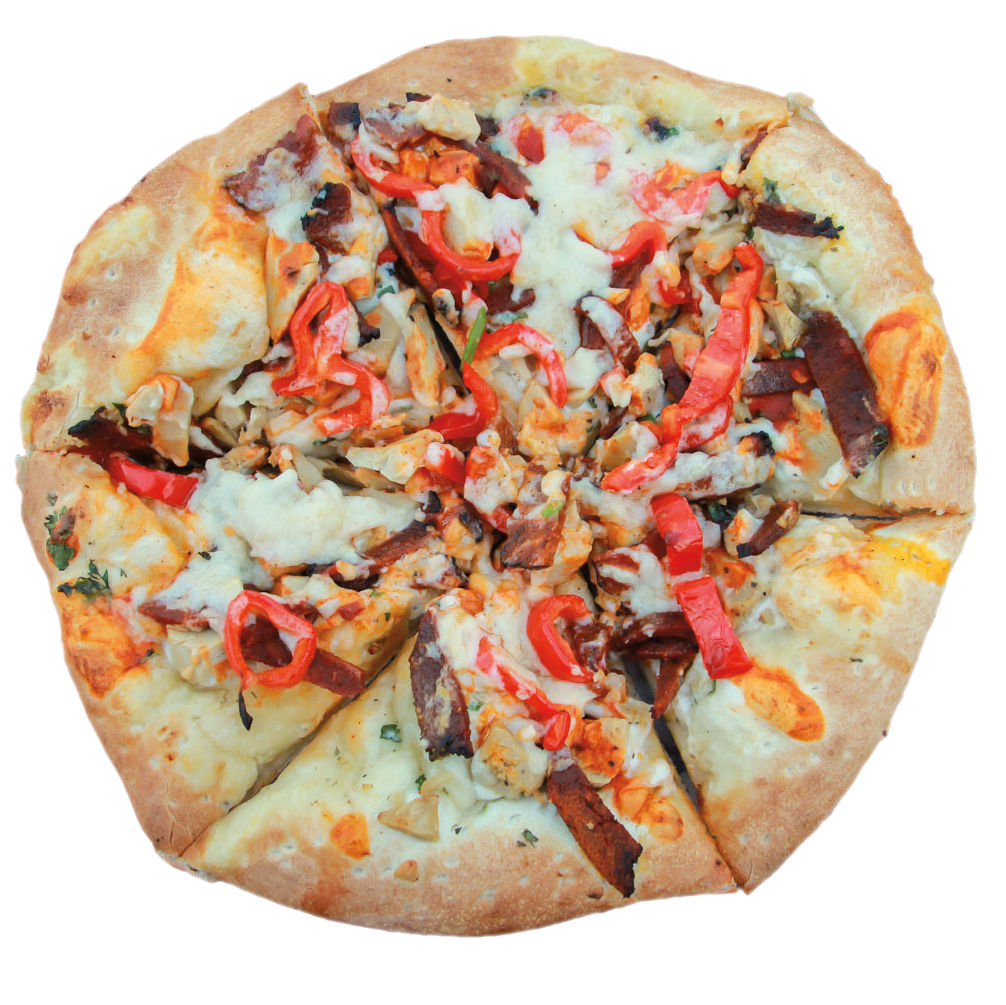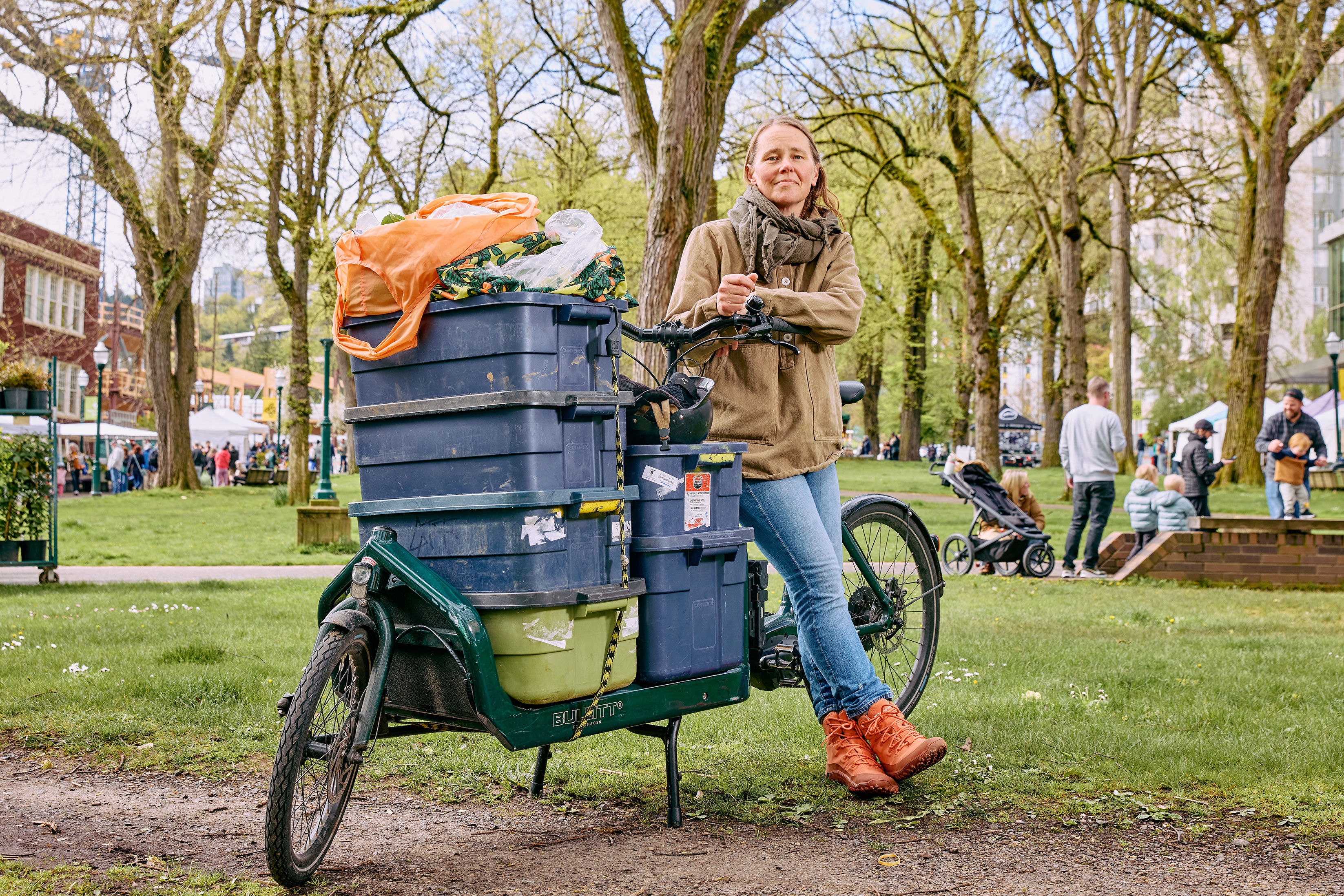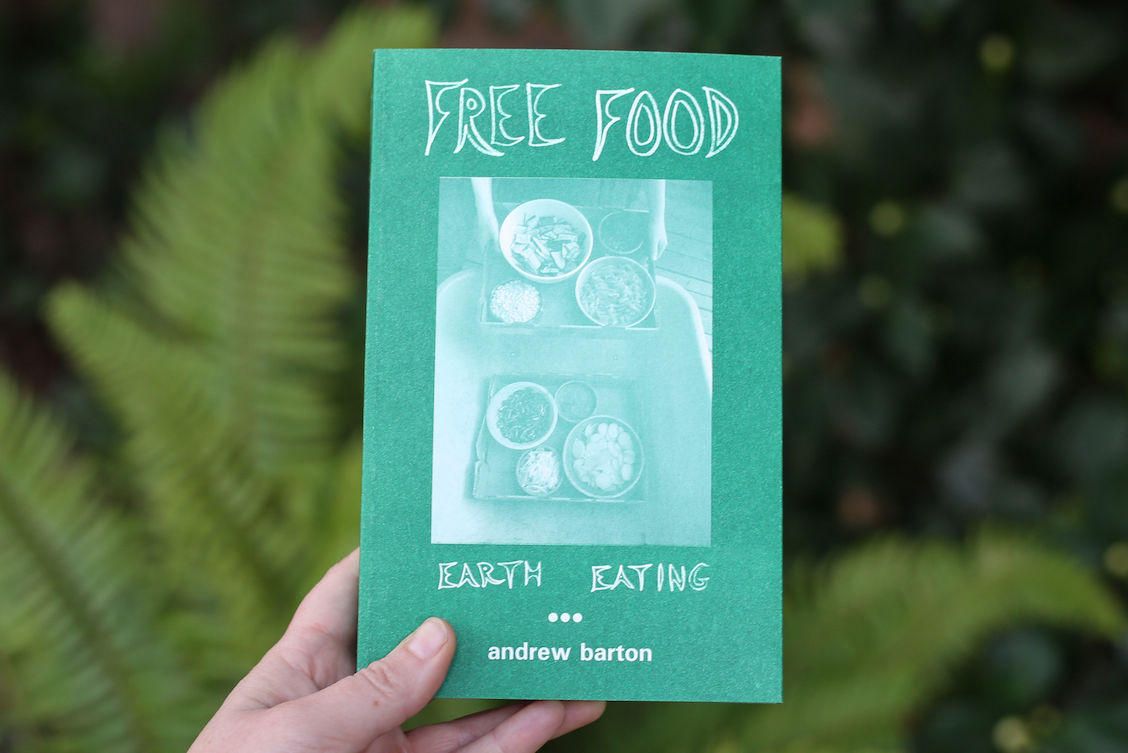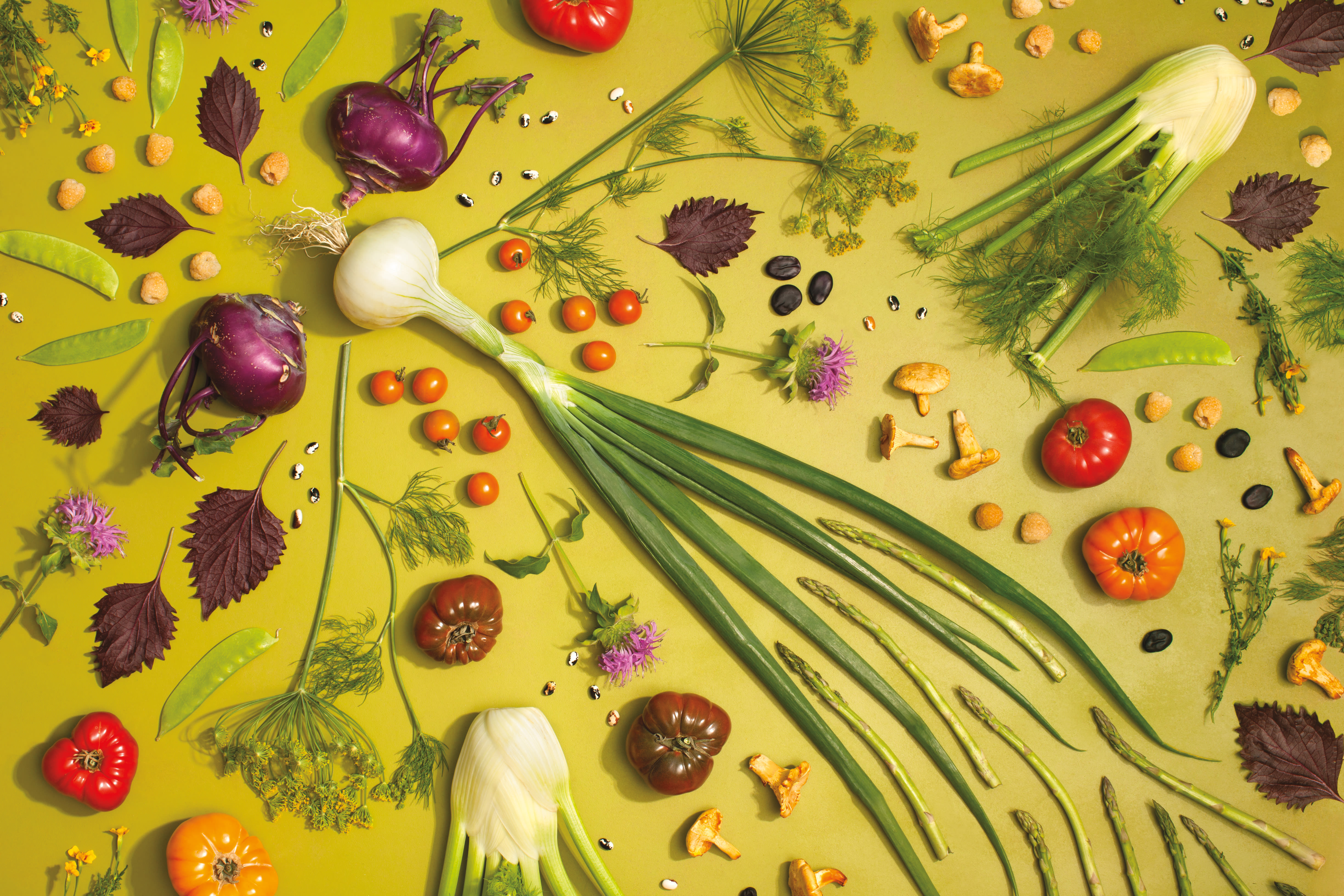
Taste the Rainbow: Oregon Farms Show Off Their Dazzling Bounty
Maybe you wander the Portland Farmers Market now and then. Or maybe you closely monitor organic asparagus prices at the grocery store. But you haven’t experienced true veggie love until you’ve talked peaches with Ava Gene’s Josh McFadden, or debated the merits of boysenberries with Rubinette Market’s “produce dork” Josh Alsberg. Local farmers grow (and coddle) fruits and veggies year round—often at the request of chefs. We asked these veg heads about their favorites, and photographed them in a manner that befits their status as local gems.
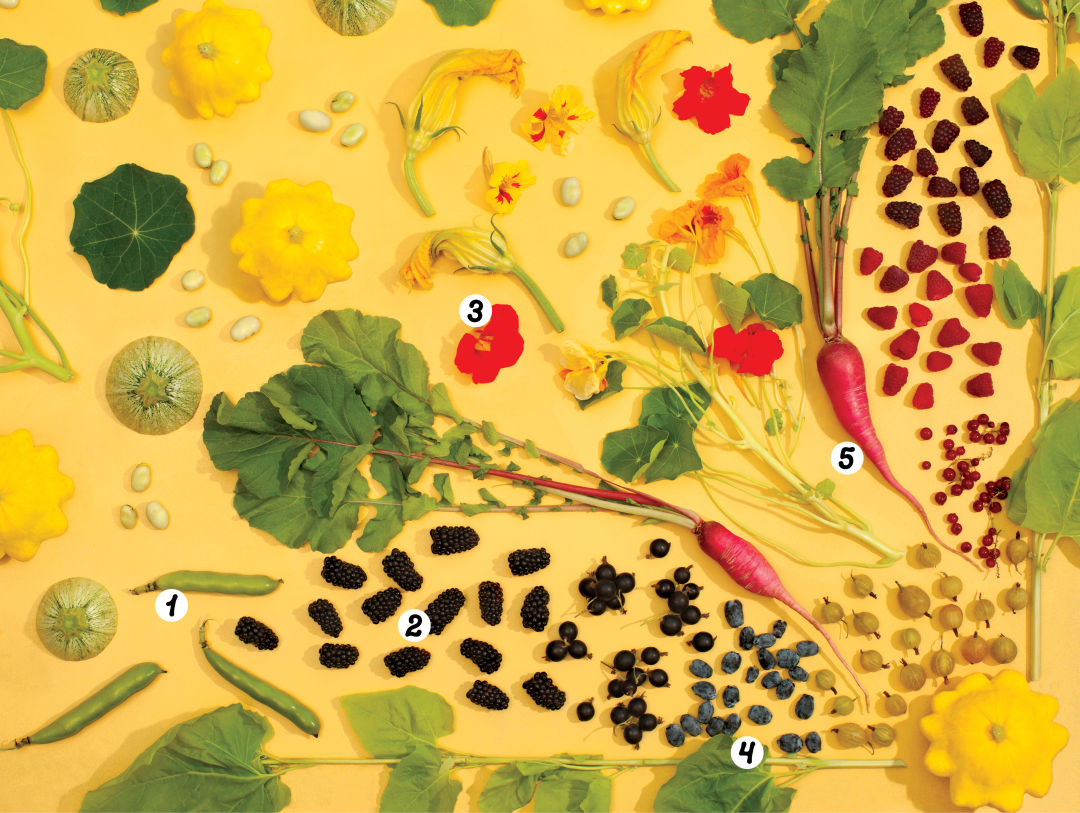
Fox & Bear Urban Farm squash blossoms; Black Locust Farm and Portland Seedhouse nasturtiums; Stargazer Farm China Rose radishes and Our Table Shunkyo radishes; Portland Seedhouse Golden Marbre pattypan squash, Ronde De Nice heirloom squash, and golden orach; Gales Meadow Farm Casine fava beans (in pod and shucked). Berries clockwise from top left: West Union Gardens tayberries; Deep Roots Farm raspberries; West Union red currants, gooseberries, and haskap berries; Ayers Creek josta berries; West Union marionberries
Image: Isabella Cassini
1. Fava Beans
Smashed on toast or sautéed with onions and garlic, these creamy oversize beans are wonders. Nostrana’s Cathy Whims loves fat Casine favas from Gales Meadow Farm, grown from heirloom Italians seeds no longer available in the US. “They’re meaty with a lot of umami—just super, super satisfying,” says Gales co-owner Anne Berblinger. She’s sharing her seed stash with other local farmers in the hopes that the fava varietal will become a regional specialty.
Get it: June–July (fresh)/Sept (dried) at Gales’s Hollywood market stand
2. Marionberries and Boysenberries
Boysenberries are the unsung hero of the berry world, according to Josh Alsberg, who runs the impeccably curated grocery Rubinette inside NE Sandy’s Providore Market. The cousin of Oregon’s flashy marionberry, they're great for baking or by the handful. “Marionberries are a bit sweet. Boysenberries have a much tarter, more sophisticated flavor,” Alsberg says, comparing berries to wine. “Big cabs are easier to drink, but there’s more nuance in pinot noir. Boysenberries are the pinot.”
GET it: July at West Union Gardens U-Pick for boysen, July–mid-Aug for marion
3. Nasturtiums
Don’t dismiss these vivid blooms as just another garnish. “They’re incredibly flavorful,” says Maya Lovelace, of Southern pop-up Mae. She adores their peppery heat in roasted cauliflower salad with cherries and black garlic and smuggles them into pestos. Lovelace gets fleurs from Dan Sullivan at Black Locust Farm, who also grows Appalachian staples just for Mae—heirloom Fife Creek Cow Horn okra to greasy beans.
Get it: Summer farm markets
4. Orach
You like heady greens? Great—you’ll adore mountain spinach, which tastes like a slightly salty, minerally version of the bagged stuff. “It also provides three times more vitamin C,” raves Bill Wallender, the farm-to-tabler behind N Mississippi’s Quaintrelle. He’s experimenting with orach in Caesar-style salads.
Get it: June–Oct at Working Theory Farm
5. Radish Bulbs & Flowers
Vince Nguyen, the chef behind mod pop-up Jolie Laide, gets excited over radishes—from root to blossom. “The textural crunch is quite refreshing,” he says. “The flowers are sweet.” He gets his stash from Pratum Botanicals, a boutique herb biz in Cully. Right now he’s pairing foie gras with the bulbs and flowers, dressed with lemon and sea beans.
Get it: May–Oct at farmers markets
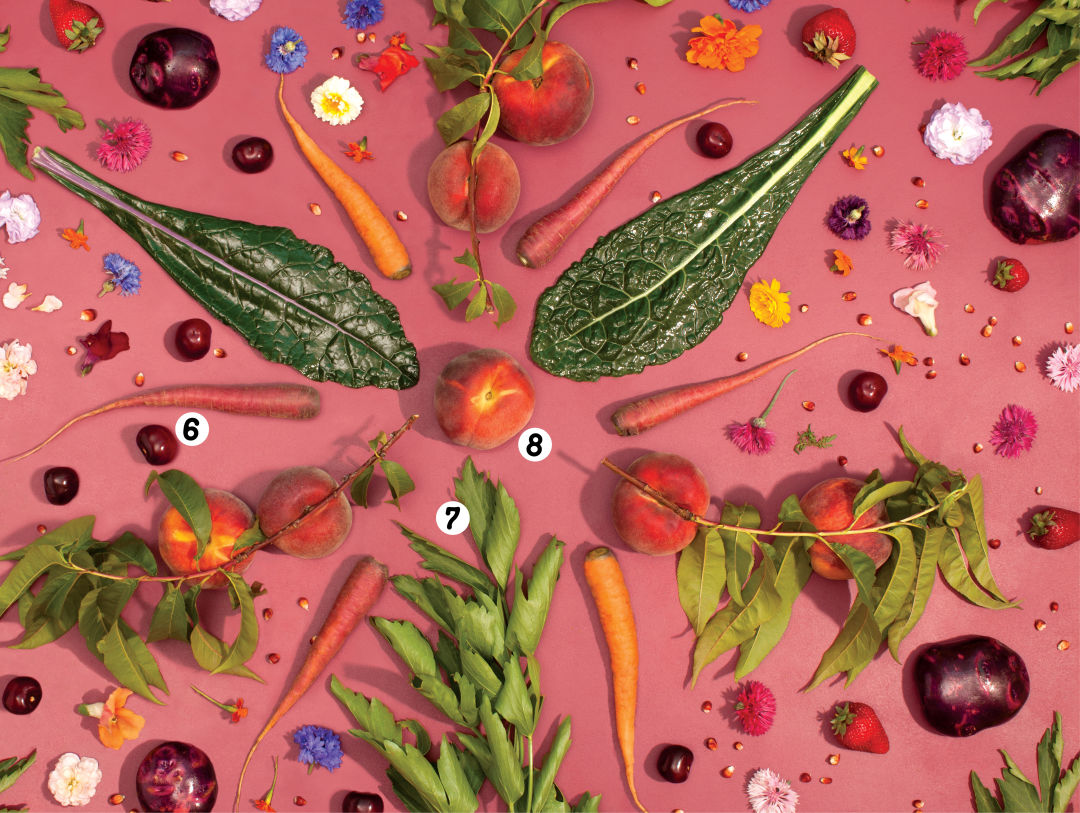
Fox & Bear Dazzling Blue kale and Purple Viking potatoes; Baird Family Orchards peaches, Royal Brooks cherries, and Lapin red cherries; Portland Seedhouse Red Floriani polenta corn and lovage; Black Locust edible flower mix; Stargazer Starburst carrots; Our Table strawberries
Image: Isabella Cassini
6. Cherries
When the cherries come in, Greg Higgins, chef-owner of landmark farm-to-table spot Higgins, gets busy. “Bings, Lapins, Rainiers ... I go by taste. I look for some snap and a nice sweet-tart balance,” he says. “We have a perfect climate for cherries. And volcanic soils grow tasty fruits.” Early summer brings a parade of cherry hits, from duck with green peppercorns and cherry compote to marzipan and sour cherry tarts. Meanwhile, Rubinette’s Josh Alsberg is partial to Attika red cherries from Baird Orchards in particular. “Complex, robust flavor, juicy, with good crisp bite and a long finish,” he says. “It’s a cherry work of art; probably my second favorite piece of fruit on the planet, right behind Seascape strawberries.”
Get it: Summer at Rubinette
7. Lovage
“I really like vegetables that have a sort of ‘witchiness,’ like they possess a kind of power beyond being a simple vegetable,” muses Farm Spirit’s Aaron Adams. Arcane veg no. 1? Feathery, anise-meets-celery flavored lovage, which can shoot up to seven feet tall. He blends it into juice served with roasted fennel and quinoa, or even churns it into herbaceous ice cream. “The flavor of lovage is so intense,” he says. “It doesn’t cover up other flavors so much as push them forward.”
Get it: April–Nov at farmers markets
8. Peaches
Ava Gene’s Josh McFadden dubs them his “favorite things, period.” Sweet, super juicy Baird Family Orchard peaches—grilled, pickled, baked, or whole—are Oregon’s stone fruits kings. The three decade old Dayton operation selects varietals—Suncrest to Sweet Sues—that complement its climate and soil, only sending fruit at peak freshness out to local farmers markets and chefs. McFadden's pro tip? Be gentle. “Don’t bruise them,” he warns. “Treat them like eggs that could crack.”
Get it: July–Sept at Baird's farmers markets stands
Rubinette Apple
(Not pictured) How obsessed is Josh Alsberg with apples? He named his grocery store after his favorite one. Rubinette is a paean to seasonal treasures—first and foremost the rare, red and green striped fruit, which starts dropping in September. “My first Rubinette, 10 years ago when I worked at New Seasons, was a real fruit dork moment,” he reminisces. “It’s just apple joy: crisp, juicy, firm flesh; sweet and then a wave of robust tartness that washes over your tongue. It’s the apple all apples aspire to be.”
Get it: Late Sept–Oct at Rubinette or Kiyokawa Family Orchards
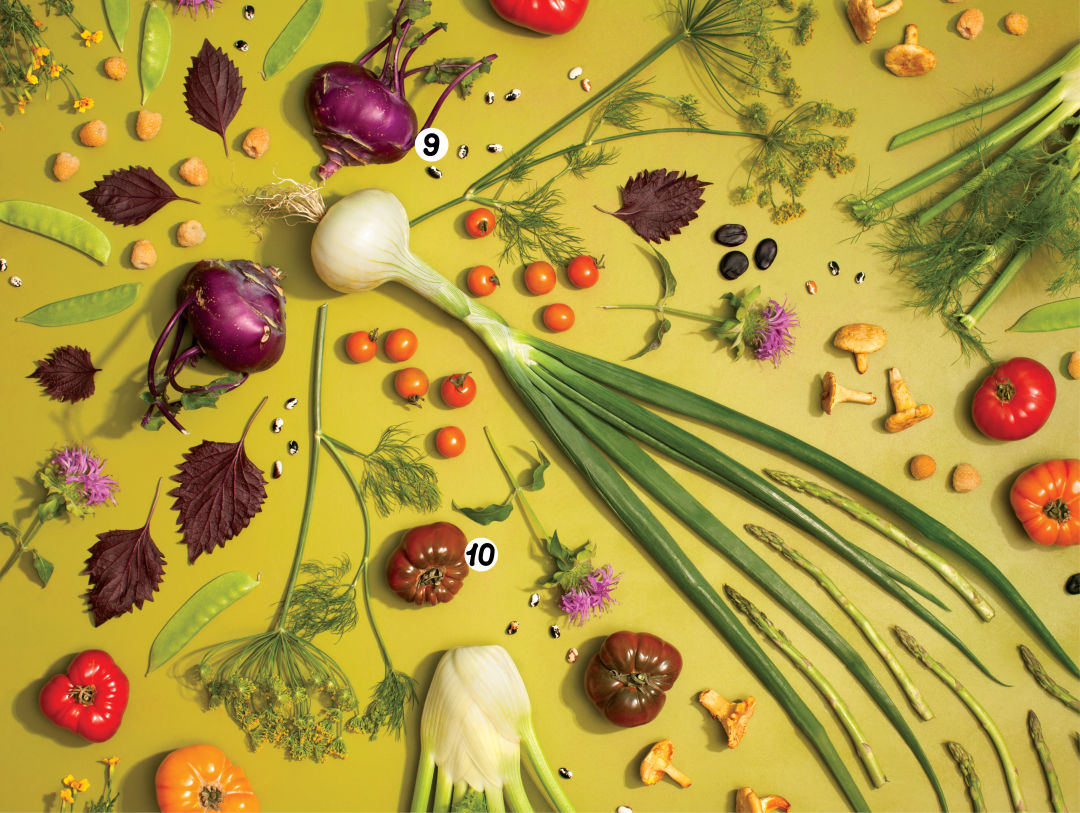
Portland Seedhouse Tangerine Gem marigold, Walla Walla onions, Orca and Zuni Gold dried bush beans, dill flowers, red shiso, and dried Frog Island fava beans; local snap peas; Deep Roots golden raspberries; Noble Rot rooftop Bee Balm; Gathering Together Farm purple kohlrabi and Siletz tomatoes; Denison Farm Brandywine tomatoes, Purple Cherokee tomatoes, and cherry/grape tomato mix; local fennel; Cascade Organic wild-harvested chanterelle mushrooms; local asparagus
Image: Isabella Cassini
9. Kohlrabi
Celebrity chef Chris Cosentino is known for dishes like “Pig’s Head with Brainaise” at downtown’s Jackrabbit. But he has a major soft spot for this bulbous, spiky-headed brassica, which tastes a bit like broccoli stems or kale—depending on which part you munch. “It’s an underutilized vegetable, kind of like the offal of the vegetable world,” he says. “No one really knows what to do with them.” Well, he does: Cosentino shaves the crunchy plant on a mandoline for his spin on green papaya salad or to bake in gratins; he slow cooks the leafy tops like collard greens, and sears and roasts the root like a turnip. “Texturally, it’s beautiful,” he says. “Just remember to peel the fibrous skin.”
Get it: May–Sept at Gathering Together Farm stands
10. Tomatoes
Ray chef-owner Jenn Louis, who published The Book of Greens this past spring, speaks for the humble tomato. She grows her own vibrant Sun Golds and craggy heirloom varietals every season. “They’re just so tasty and useful—they’ve got the perfect balance of acidity and juiciness when they’re in season,” she says, ticking off dishes: “Israeli salad, stuffed with rice and spices and roasted; [in] shakshuka....” Just don’t waste them come the end of summer, she warns. Pickle green tomatoes to use as a bright flavor boost to sandwiches and sauces all winter long.
Get it: June–Sept, everywhere
Frikeh
(Not pictured) The secret to Greg Higgins’s favorite grain? A flamethrower. Every summer, the crew at hallowed Ayers Creek Farm in Gaston roasts green wheat right in the field to create frikeh, a smoky, nutty, toasted grain that lends interest to everything from aromatic tomato-herb salads to loaves of rustic levain bread. “Everything you do with it carries that nice charry flavor,” raves Higgins, crediting Ayers Creek master farmer Anthony Boutard for its unique bite—the product of year after year of seed saving and careful selection. “I don’t think I’ve tasted better frikeh anywhere. It’s his obsession.”
Get it: Mid-July–Aug at Rubinette
Produce gathered by Rubinette’s Josh Alsberg & Portland Seedhouse’s Evan Gregoire
Rubinette Produce Market is located at 2340 NE Sandy Blvd; follow Alsberg's veg-adventures at rubinetteproduce.com. Farmer Gregoire collects and sells heirloom seeds and grows specialty crops for local chefs. Find his seed catalog at portlandseedhouse.com
